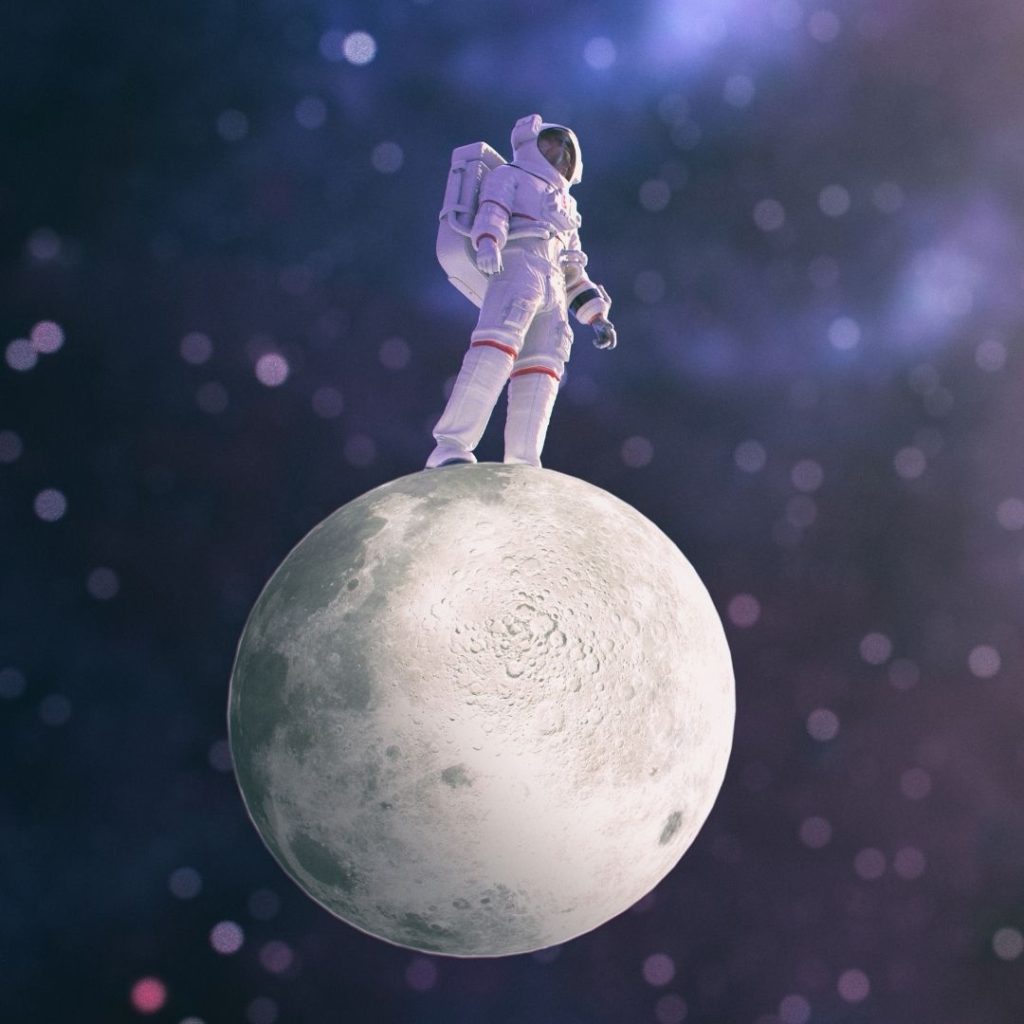CHANGE – Part 2
In my last blog post, I talked about the ever-changing nature of change itself.
In Part 2, which I’m calling Change: The Sequel, we’re going to dive a bit more into our collective PERCEPTION of change and how it affects what each of us THINKS we’re capable of.
So let’s start with a bit of history…
Before July 20th, 1969, landing on the moon was the thing of fairy tales, or more accurately, science fiction. Before this historic date, people had fan-tasized about what the moon was made of, written books and songs about it, and drawn many pictures of a smiling cheese wedge in the sky. So when five billion people saw a man plant the U.S. flag on the moon in 1969, it shifted humanity’s perception of the possible. Fantasy became reality in one fell swoop and the paradigm for what we thought was “possible” in terms of exploring our universe, changed forever. In short, what was one small step for man, became one giant leap for human consciousness.
Remember, that was back when NASA was calculating what it would take to send a spacecraft 238,000 miles away (and get it safely back home)… by hand.
And as we all now know, once computers came along, those possibilities were exponentially opened even wider. As I write this, astronauts from around the world are living in housing developments orbiting over our heads at any given moment. And to-date, the U.S. alone has successfully launched over 200 manned flights since 1969… from 0 to 200 in just 50 years. And while we may use more modern, and certainly more efficient, methods of calculating space travel today, our personal capacity for co-ming up with solutions to everyday problems or challenges hasn’t grown at the same rate.
The only REAL CHANGE has been our PERCEPTION of what is possible.
Think about the advent of personal computers, which brought accessible technology to our kitchen tables. And then, when the worldwide web fur-ther opened us up to almost unlimited information (buh bye, encyclopedias and yellow pages!)… today we can find literally anything we’re looking for without pouring through stacks of books at our local library as we once did. We can compare prices and read reviews before we buy a grill, a hammock, or a pair of yoga pants. Today, a relatively short time from when personal computers first entered our lives, we can have a taco night com-plete with margaritas delivered to our doorstep within mere hours.
In just about a decade, photography changed immensely too. Having once taken our handfuls of film to the local drugstore, we now have the ability to send our memories digitally anywhere and to anyone. We can share on so-cial media in an instant. Grandparents can see their growing grandchildren in real-time and we can stay in touch with our high school friends without waiting 10 years between reunions.
Travel has changed profoundly as well. We don’t have to jump on a 777 to see the world’s wonders anymore. With VIRTUAL REALITY, we can traverse the globe without ever leaving our couches. (Meanwhile, the cost of a VR headset has gone from up to $10,000 per headset to a much more accessible $200.)
In 1996, GM forever changed the transportation industry with the advent of the first electric car, its’ EV1. And while the petroleum industry killed this first attempt at the future of non-gas-guzzling automobiles, one man, Elon Musk, later came along and created the Tesla. And voila! Now there are 10,000 e-cars being manufactured per month. And because of Tesla’s commercial success, every major auto manufacturer is following suit. Fur-ther… back in 1969, who knew that at one point someone would be work-ing on getting us from Los Angeles to San Francisco in just 35 minutes? Musk’s Hyperloop had its first successful passenger test in 2020, giving its’ riders just enough time to catch their favorite sitcom between cities.
In short, technology has absolutely changed the way we live on — and in-teract with — Planet Earth. It’s shown us in concrete terms how quite liter-ally anything is possible. And don’t forget, humans are the ones who have created all the technologies that have made all of these possibilities… pos-sible.
So the questions become then:
Why aren’t we CHANGING the way we operate PERSONAL-LY/INTERNALLY at a similar rate?
WHY AREN’T WE EXPANDING OUR OWN VISION OF WHAT’S POSSIBLE FOR US, PERSONALLY?
And how do we really know WHEN to change, WHAT to change, or HOW to change?
That’s where I may be of help.
Let’s together determine what POSSIBILITIES are important to YOU and what CHANGES you want or need to make to upgrade your own reality… and then, let’s get you there!
The most effective way to start is by using the Personal Discovery Ques-tionnaire and then we’ll review the results together (at absolutely no cost to you). Let’s DISCOVER (uncover) your personal future.
And as you now know, technological possibilities and personal possibili-ties are LIMITLESS.







Thanks for your blog, nice to read. Do not stop.